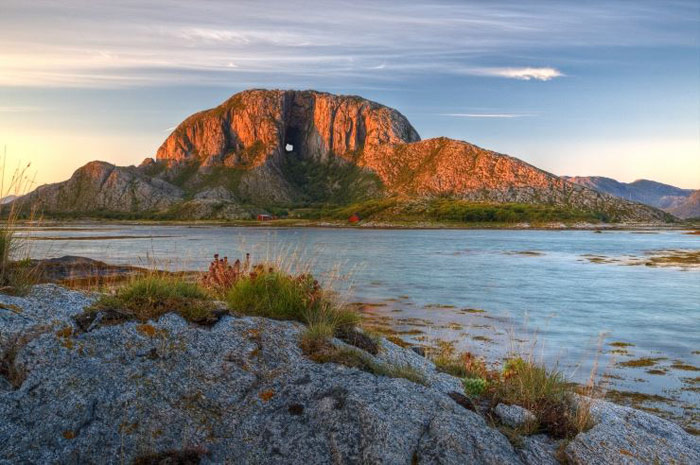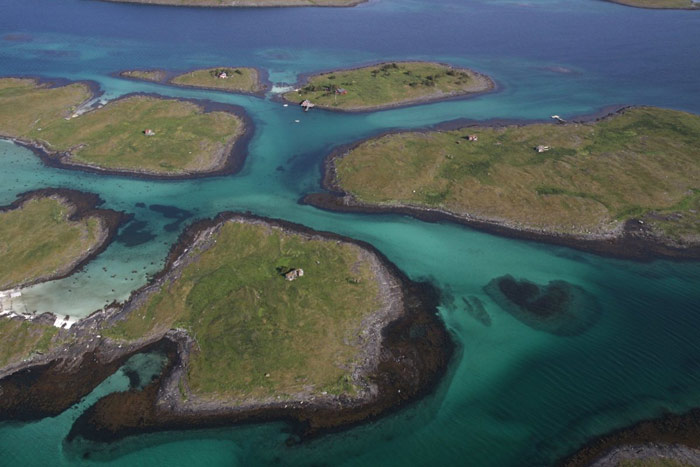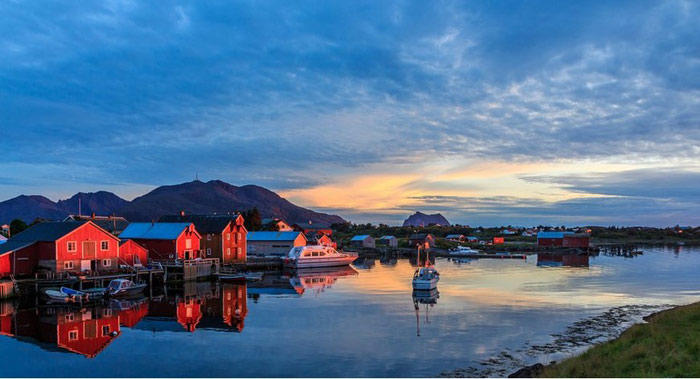Vega Islands - World Cultural Heritage in Norway
Unesco's Scientific, Educational and Cultural Organization has recognized Norway's Vega Islands as a World Cultural Heritage in 2004.

Vega Islands in Norway
Vega Island is an island and is also an archipelago and a residential area in Norway's Nordland province. The island has an area of about 163 km2 including 6,500 islands including small islands and rocky islands. The island's residential area was formed in January 1838. The area is adjacent to other villages such as Bronnoy, Vevelstad and Alstahauyg.
 The Vega archipelago consists of 6,500 islands, large and small, where the earliest human existence in the Northern Norway region existed
The Vega archipelago consists of 6,500 islands, large and small, where the earliest human existence in the Northern Norway region existed
Vega Island is famous for being the oldest inhabited place in Northern Norway . According to historical records, people have lived here since about 10,000 years ago. On the island, there are special conservation areas in which Vegtindan Mountains are located on the North of the Island. The mountain is about 700 meters above sea level and covered with moss. Besides, there are four areas also within the special protection because of the values they contain. These four areas include: Lanan / Skjaevaer Nature Reserve; Bird protection area in Lanan / Plovacr; Hysvaer / Sola natural and wildlife landscape protection area and Bird Protection Area in Muddvaeret. In addition to the protected areas under the international convention on the island, there are three natural reserves of the country including: Eidemsliene, Holandsosen and Kjellerhaugvatnet.

Due to the special climatic conditions, Vega Island is an environment for about 10 species of orchids growing and also houses more than 210 species of birds.Eidemslicne nature reserve has many species of thermophilic plants suitable to live in the sunshine of the sea and mostly pine forests in Northern Norway. Holandsosen Nature Reserve is a wet area with a shallow lake and calcium-rich soil. This sanctuary has 149 species of birds that live all year round. Lanan Nature Reserve preserves a variety of coastal nature and is an important area for many species of birds and ducks. For hundreds of years, indigenous peoples have had to collect sea duck feathers to produce intestinal pillows, blankets . and so far this work still exists. Around the 9th century onwards, the collection of sea duck feathers was the most developed work in this archipelago. People also built many ducks for ducks to find nest. There are periods of income from the supply of sea duck feathers, which accounts for one third of the islander's income. This harvest work has probably been dated to over 1000 years. However, in the early days, people did not sell sea duck feathers but this work was mainly thought by the women on the island. They went to collect sea duck feathers to use as household products.

Being an offshore island so long ago people here lived mainly on fishing and agriculture . So far these jobs are almost unchanged. People on the island still start fishing and agricultural production every day. The other is that today means of catching and raising husbands are better than before. The most populated islands are Holand, Valla, Igeroy, Gladstad. Gladstad Village is the headquarters of the government on the archipelago and is home to the most commercial centers.



The Vega Islands are recognized as the World Cultural Heritage by the United Nations Organization for Science, Education and Culture according to criteria (v): Vega Islands are home to the earliest prehistoric people in the region. Northern Norway, while living in harsh climatic environments, has been maintained for thousands of years by traditional occupations based on natural conditions. The promotion of the creativity, adaptability to the environment and nature of the island residents is a testament to human development in a long time. Besides, the profession of sea duck feather harvesting is a traditional profession that once brought about 1/3 of the total income for islanders so far.
- Bryggen - Norway
- Stone carvings in Alta - Norway
- Urnes wooden plank church - Norway
- Secrets - World Cultural Heritage in China
- The island is located near the Antarctic of New Zealand
- Cultural landscape of Bam - World Cultural Heritage in Iran
- Di Hoa Vien - World Cultural Heritage in China
- The territory of Roy Mata - World Cultural Heritage at Vanuat
- Zvartnots site - World cultural heritage in Armenia
- Marshall Islands - Bikini Atoll
- Mining area in the town of Roros - Norway
- Nesvizh Castle - World cultural heritage in Belarus
 Suzhou classic bonsai garden - China
Suzhou classic bonsai garden - China Chau Nguyen Dynasty
Chau Nguyen Dynasty Thai Son Mountain - World Wonder
Thai Son Mountain - World Wonder Ancient villages of Shirakawa-go and Gokayama
Ancient villages of Shirakawa-go and Gokayama